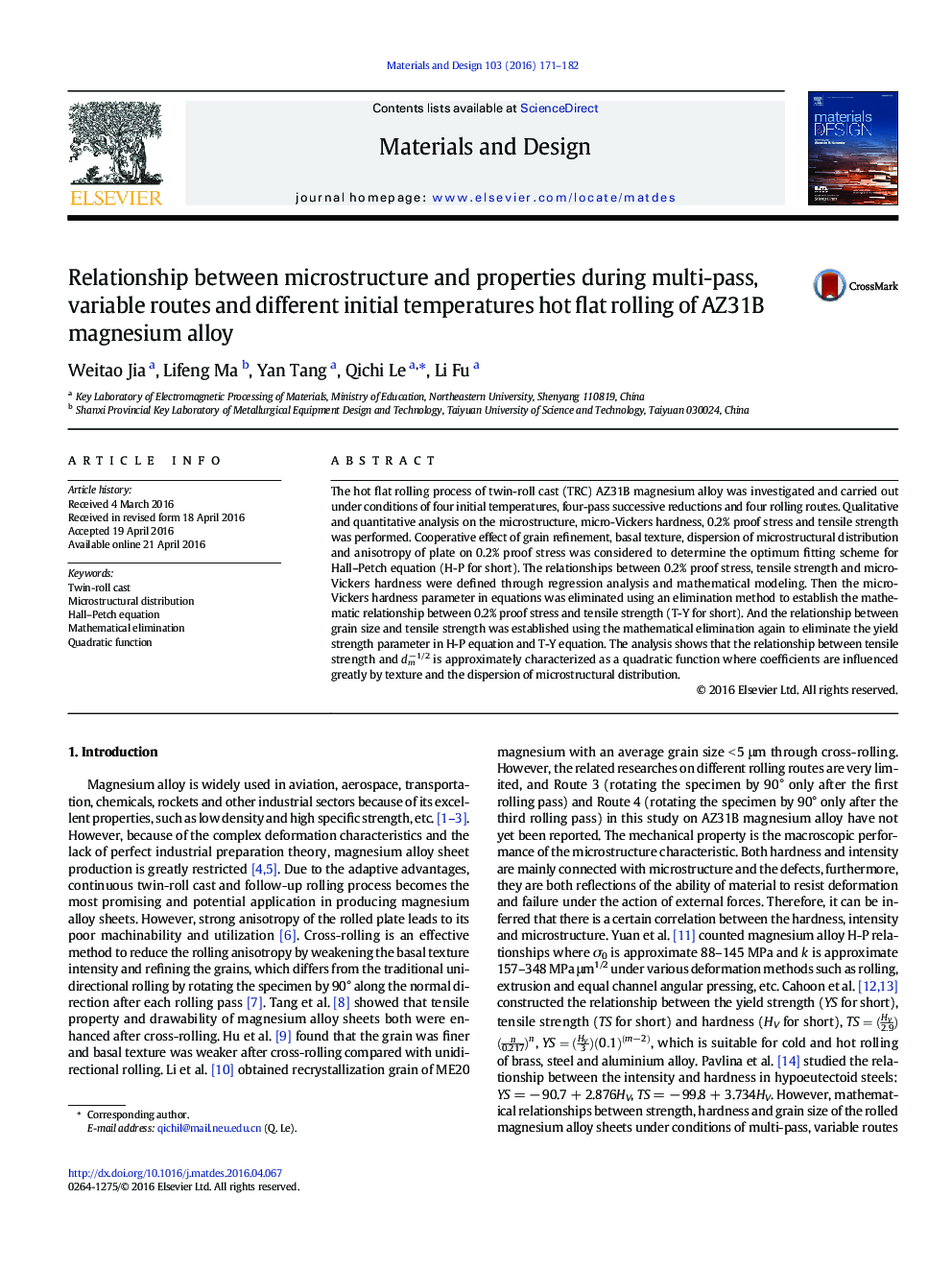| کد مقاله | کد نشریه | سال انتشار | مقاله انگلیسی | نسخه تمام متن |
|---|---|---|---|---|
| 828019 | 1470279 | 2016 | 12 صفحه PDF | دانلود رایگان |

• Macro-formability in each direction of the twin-roll cast AZ31B sheet was evaluated.
• Rolling schedule with the capability of refining the grains and reducing the anisotropy effectively was proposed.
• Relationships among tensile strength, yield strength, hardness, and grain size were modeled and successfully optimized.
The hot flat rolling process of twin-roll cast (TRC) AZ31B magnesium alloy was investigated and carried out under conditions of four initial temperatures, four-pass successive reductions and four rolling routes. Qualitative and quantitative analysis on the microstructure, micro-Vickers hardness, 0.2% proof stress and tensile strength was performed. Cooperative effect of grain refinement, basal texture, dispersion of microstructural distribution and anisotropy of plate on 0.2% proof stress was considered to determine the optimum fitting scheme for Hall–Petch equation (H-P for short). The relationships between 0.2% proof stress, tensile strength and micro-Vickers hardness were defined through regression analysis and mathematical modeling. Then the micro-Vickers hardness parameter in equations was eliminated using an elimination method to establish the mathematic relationship between 0.2% proof stress and tensile strength (T-Y for short). And the relationship between grain size and tensile strength was established using the mathematical elimination again to eliminate the yield strength parameter in H-P equation and T-Y equation. The analysis shows that the relationship between tensile strength and dm− 1/2 is approximately characterized as a quadratic function where coefficients are influenced greatly by texture and the dispersion of microstructural distribution.
Figure optionsDownload as PowerPoint slide
Journal: Materials & Design - Volume 103, 5 August 2016, Pages 171–182